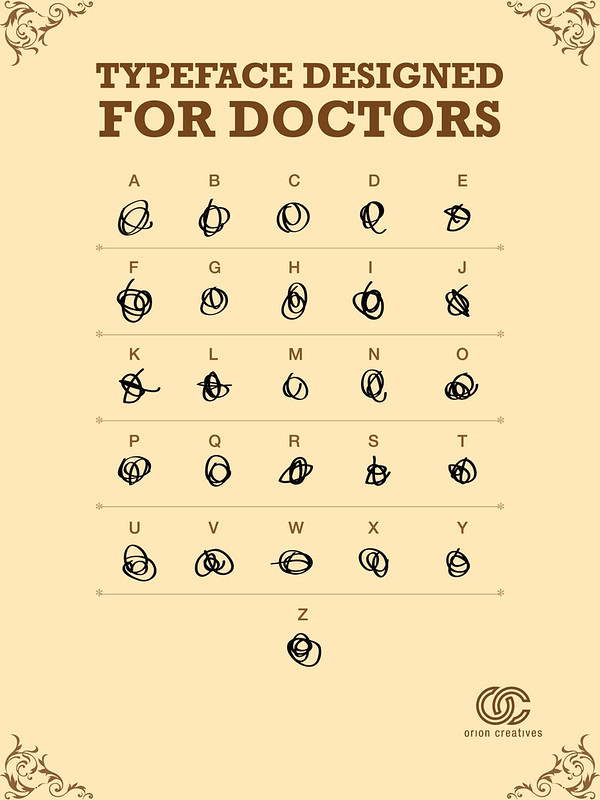Of the essential skills for doctors, writing has to be up there as one of the most important. Doctors writing has been the butt of many jokes ove the years – justifiably, and written prescriptions remain a significant source of error in hospitals up and down the land.
The medical notes are another area where the handwriting of doctors is often held up to scrutiny. In days gone by, the registrar would be the doctor who registered the opinion of the consulting physician, and before that notes were kept mainly for the interest and records of the physician themselves – helping in the discovery of syndromes and new disease entities through meticulous observation, and synthesis of the salient features of cases over time.
And now – what are the medical notes now? The medical notes are now no longer the preserve of physicians, with entries from the whole MDT contributing to the story of admission, recovery, discharge planning, and plans for the future. But the written history remains a key part of the journey of every patient. It is often in those initial observations, descriptions of symptoms and signs that they keys to a diagnosis can be found.
The changes in medical training models, staffing models, and working conditions have also increased the importance of the initial history, and the medical notes as a tool for communicating the key aspects of a case to the team that follows after. Given that a patient may be cared for by a different doctor almost every day of their admission, written notes are more than ever the most reliable repository of clinical information.
For such a key part of the medical system, one might expect that there is a rigorous training scheme, with competencies, certificates, seminars and reflective practice to ensure that all the appropriate details are recorded, communicated and understood by those who come along afterwards to care for the patient and understand the complexities that make up every patient and their story. Unfortunately there is little work in the literature that supports the training of medical students in written communication.
A study published online for the PMJ looked at the development and evaluation of a scheme that aimed to tackle the lack of formal training in constructing written histories, and support trainers in the evaluation of medical students efforts at a ‘clerking’.
They developed a study with three arms – one of standard practice, one with additional training for students in communication, and a final arm with training in communication, combined with training for residents on how to give feedback using the RIME tool. The combined intervention showed positive results with statistically significant improvement in clerking scores between the start and the end of the study. There was also a correlation between good handwriting, and overall quality of the histories – a correlation that could have been one of the key messages of the paper.
In addition the approach that the authors took of not simply ‘educating’ students, but in fact, working to create an environment where useful feedback, using a consistent and routinely applied tool is a good lesson for anyone trying to improve educational interventions, and is an important lesson from this paper.
However, I think we need to look a little more critically at what we as a profession are trying to achieve with the education we offer our students.
I often think that we are training the doctors of the future for the hospitals of yesterday – and we know that a significant proportion of what we teach our students will be wrong by the time they enter the workplace…
So when we look at the direction of movement in the medical world when it comes to written notes, perhaps we need to take a leap forwards in terms of what we are teaching our students.
A few years ago patients were hardly ever copied into their clinic letters – now it is accepted as the norm. This increasing access to medical records is gathering pace in a far more profound way in the US through the open notes movement, where physicians and patients share near equal access to the medical notes, changing the balance of consultations, and written records, and ensuring that patients can play a far more active role in the management of their illnesses.
The other transformation is from handwriting to typing, and in the near future, to voice recognition. Electronic health records are also transforming the skills required to be a physician. No longer is a trusty fountain pen, and a good dictation speed the mark of a skilled communicator in the written form. Now we shall have to be proficient at forms of communication that are more immediate, direct, and perhaps more open to misinterpretation (tone is notoriously difficult to convey in quick electronic communiqés.)
Training medical students in how to construct and communicate a history is vital, but we must keep in mind how our workplaces are changing, and how our communication is no longer necessarily directed to other medical professionals, but in fact towards the subject of the note. This will require not only the skills encapsulated in Reporter, Interpreter, Manager, and Educator framework, but all of those that ensure a doctor can also be a partner in managing a chronic disease.
